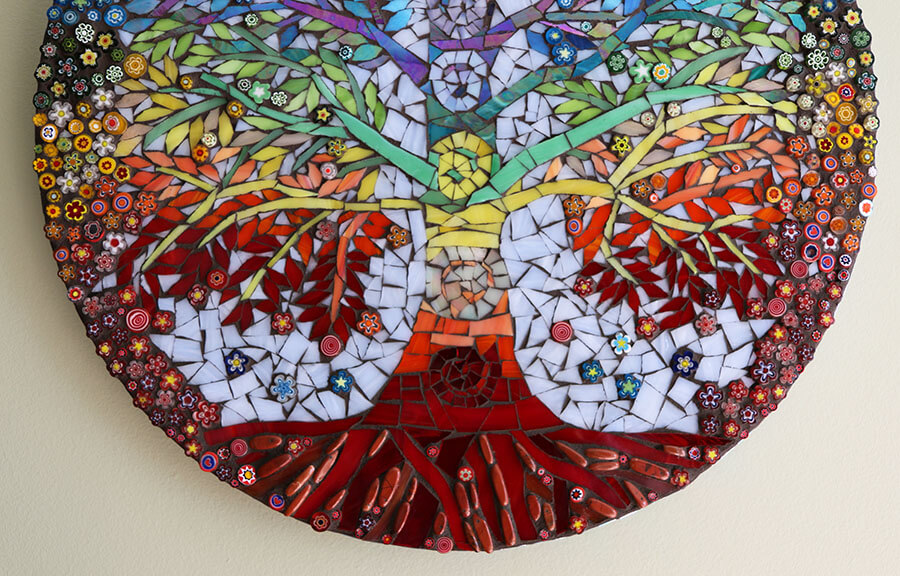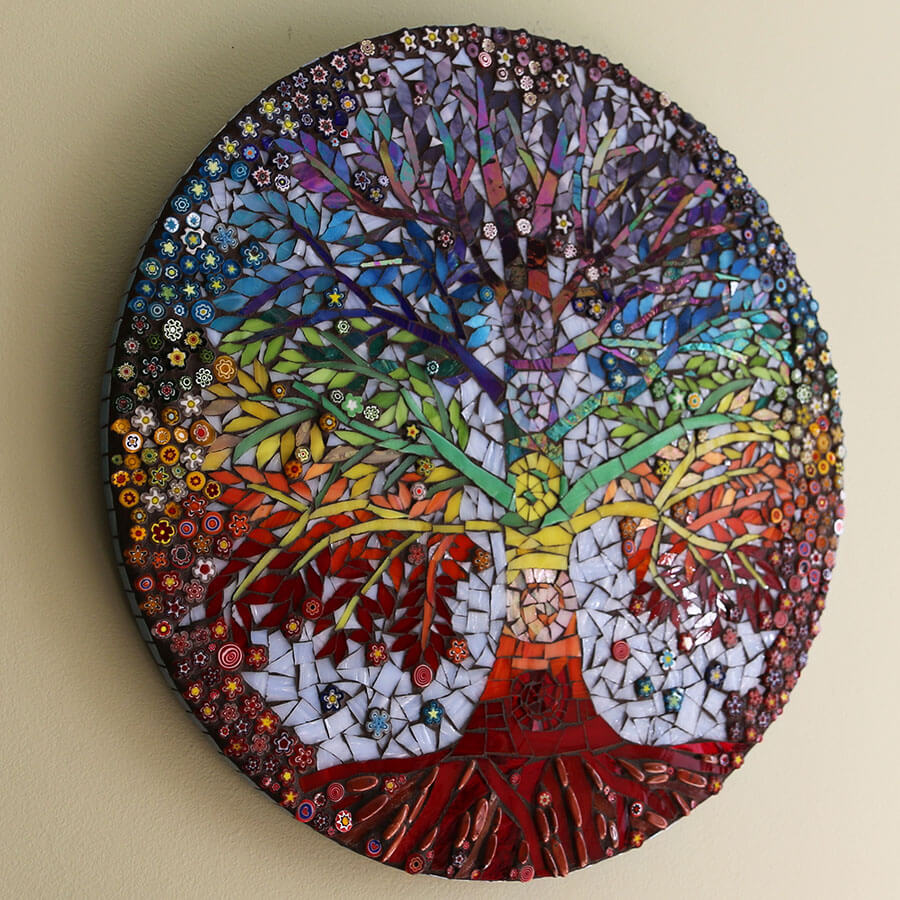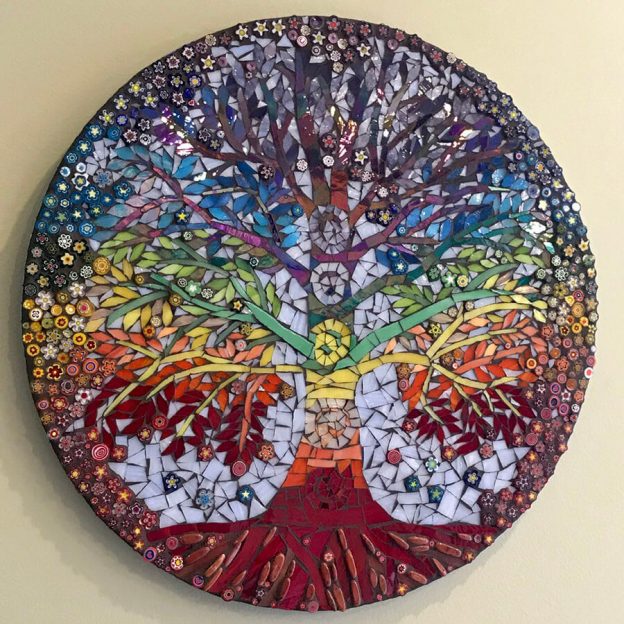Artist Betty Ackerman recently used our fire-polished millefiori (the Mud-Turtle Mosaic brand) and stained glass to make a circular mosaic in the form of a rainbow-colored tree of life with a column of chakras spiraling inward on the trunk. Betty calls her mosaic “Chakra Tree of Life.” The first mosaics I ever made were found-object “mandalas” in the form of a tree of life in an oval, and so Betty’s design spoke to me.
I wanted to share this mosaic because Betty did a good job at maintaining adequate contrast between the tree and the background and between the branches and the leaves in spite of the color transition in the design. It would have been all too easy for the figurative element of the tree to become lost with this much “visual interest” going on in every square inch, and so the mosaic is worth studying.

Great Example
Betty’s mosaic is a great example of how to define figures using a limited amount of background in select places.
Notice how effective the white background is in contrasting the rainbow of colors and how essential it is for defining the trunk and branches and horizon. Note how the background is only visible in the places it is needed most (around the trunk and branches and horizon). The rest of the mosaic is a riot of color, but we can see it as a figurative design thanks mainly to this use of white in a few select areas to define form.
DESIGN TIPS: Betty has since pointed out that the background tile is a very light blue and not actually a pure white. Nevertheless, the background tiles still work as such due to their whiteness and lack of color. If they had the same intensity of color as the colors used in the tree, then the affect would be lost.
Then why not use pure white? In general, a very light tint of some hue always looks better than pure white. Betty’s blue tint was a good choice because of the amount of red and other warm hues in the base of the tree.
Also note how Betty manages colors to ensure that each chakra spiral in the trunk has enough contrast to be distinct and visible.
Found Objects in Figurative Mosaic
The gemstone beads between the roots of the tree are a good example of using non-tile objects as tesserae to give the mosaic a tactile dimension. But there is more to these beads than that. Whenever figurines or seashells or coins or any other figurative object is used in a mosaic, there is always the opportunity to have the object represent itself, such as this use of the gemstones as stones between the roots of the tree. To me, this always gives the artwork an interesting philosophical dimension, in the sense of the thing being both a symbol and the thing itself, a union of art and real life:
Ne c’est pas une pipe? No, c’est une pipe!

More Artwork
More of Betty’s mosaic art can be seen at her Etsy shop dancinglightmosaics.
Improved Millefiori
I almost forgot to mention that Betty completely agrees with me about our Mud-Turtle Mosaic brand of millefiori. We have a lampwork-bead factory manufacture this for us, and they cut the millefiori more uniformly and flame polish it so that it forms smooth disks without the jagged edges and uneven surfaces common to most millefiori. This makes the Mud-Turtle millefiori much easier to use for mosaic artwork, especially during the grouting process.


Leave a Reply